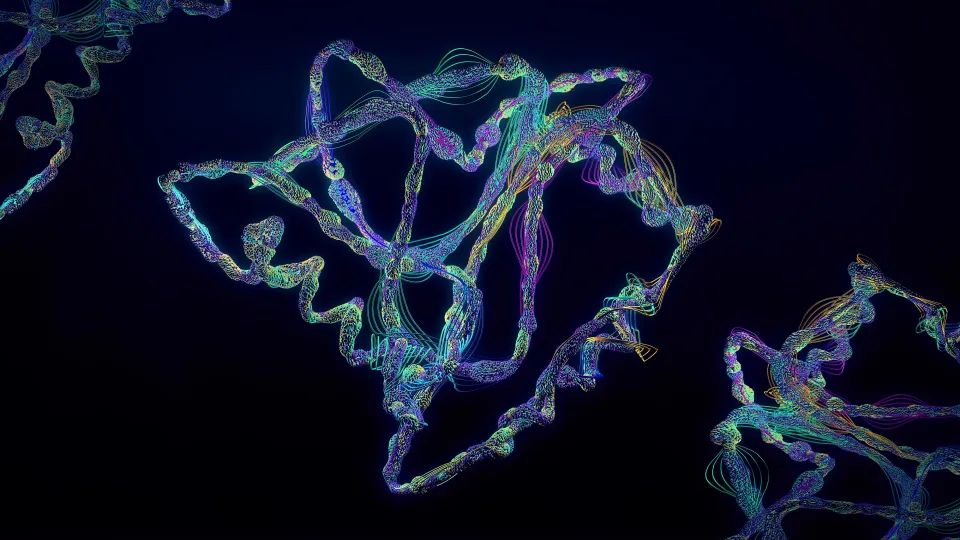
David Cowburn, Ph.D.
- Professor, Department of Biochemistry
- Professor, Department of Systems & Computational Biology
Area of research
- Structural molecular biology; structure/function relationships in the immune system, signal transduction, and nuclear transport; NMR; integration of simulation of time dependent processes and experiments; protein engineering.
Phone
Location
- Albert Einstein College of Medicine Jack and Pearl Resnick Campus 1300 Morris Park Avenue Ullmann Building 423 Bronx, NY 10461
Research Profiles
Professional Interests
David Cowburn's research centers on the application of structural biology, and particularly, nuclear magnetic resonance (NMR), to biological problems. He develops and applies useful new methods to challenging problems not readily addressed by standard methods. Current targets include the mechanism of rapid selective transport in the nuclear pore complex, and protein engineering using slicing methods. Some significant structural contributions include the first SH2 domain, the first proapoptotic BCL family member, high affinity complexes of specific SH3/ligands and stapled peptides/targets, and pleckstrin homology domain/PIP interactions. Methodological contributions cover new isotopic labeling methods, especially segmental labeling by expressed protein ligation, and production of kinases for NMR analysis; analysis of relaxation properties for weak self association, motion of multiple domains, contribution of CSA; in-cell NMR with advanced expression methods; mimics of protein-protein interactions, and molecular dynamics and NMR simulation methods. A significant area of focus is the structural biology of protein domains in signal transduction, including SH2, SH3, kinase, phosphatase, PH domains, and many others, and how natural ligands interact with them. Signaling disorders related to these domains lead to many disease states. Using NMR, there is a strong effort to understand how intrinsically disordered systems can be described, including those with 'fuzzy' interactions. In addition to NMR, the lab used molecular simuation by MD and Brownian motion methods, and small angle scattering methods.
He was a faculty member at Rockefeller University 1973-2000, and served as the start-up President and CEO of the New York Structural Biology Center, 2000-2010.
Selected Publications
Recent Publications:
173. Raveh B, Eliasian R, Rashkovits S, Russel D, Hayama R, Sparks S, Singh D, Lim RY, Villa E, Rout M, Cowburn D, Sali A. Integrative spatiotemporal map of nucleocytoplasmic transport. bioArkiv. 2023. doi: 10.1101/2023.12.31.573409. PubMed PMID: 20231231573409.
172. Cowburn D, Rout M. Improving the hole picture: towards a consensus on the mechanism of nuclear transport. Biochem Soc Trans. 2023;51(2):871-86. Doi 10.1042/BST20220494
171. Sekar, G., A. J. Stevens, A. Z. Mostafavi, P. Sashi, T. W. Muir and D. Cowburn (2022). "A Conserved Histidine Residue Drives Extein Dependence in an Enhanced Atypically Split Intein." J Am Chem Soc 144(41): 19196-19203.P
170. Malonis RJ, Georgiev GI, Haslwanter D, VanBlargan LA, Fallon G, Vergnolle O, Cahill SM, Harris R, Cowburn D, Chandran K, Diamond MS, Lai JR. A Powassan virus domain III nanoparticle immunogen elicits neutralizing and protective antibodies in mice. PLoS pathogens. 2022;18(6):e1010573. Epub 2022/06/10. doi: 10.1371/journal.ppat.1010573. PubMed PMID: 35679349.
169. Georgiev GI, Malonis RJ, Wirchnianski AS, Wessel AW, Jung HS, Cahill SM, Nyakatura EK, Vergnolle O, Dowd KA, Cowburn D, Pierson TC, Diamond MS, Lai JR. Resurfaced ZIKV EDIII nanoparticle immunogens elicit neutralizing and protective responses in vivo. Cell Chem Biol. 2022. Epub 20220224. doi: 10.1016/j.chembiol.2022.02.004. PubMed PMID: 35231399.
168. Bravo-Ferreira JFS, Cowburn D, Khoo Y, Singer A. NMR assignment through linear programming. Journal of Global Optimization. 2021. doi: 10.1007/s10898-021-01004-3. WOS:000627661100001.
167. Dixit U, Bhutoria S, Wu X, Qiu L, Spira M, Mathew S, Harris R, Adams LJ, Cahill S, Pathak R, Rajesh Kumar P, Nguyen M, Acharya SA, Brenowitz M, Almo SC, Zou X, Steven AC, Cowburn D, Girvin M, Kalpana GV. INI1/SMARCB1 Rpt1 domain mimics TAR RNA in binding to integrase to facilitate HIV-1 replication. Nat Commun. 2021;12(1):2743. Epub 2021/05/14. doi: 10.1038/s41467-021-22733-9. PubMed PMID: 33980829; PMCID: PMC8115288.
166. Sparks S, Hayama R, Rout MP, Cowburn D. Analysis of multivalent IDP interactions: Stoichiometry, affinity, and local concentration effect measurements. In: Kragelund BB, Skriver K, editors. Intrinsically disordered proteins: Methods and protocols. New York, NY: Springer US; 2020. p. 463-75.
165. Cable J, Brangwynne C, Seydoux G, Cowburn D, Pappu RV, Castaneda CA, Berchowitz LE, Chen Z, Jonikas M, Dernburg A, Mittag T, Fawzi NL. Phase separation in biology and disease-a symposium report. Ann N Y Acad Sci. 2019;1452(1):3-11. PMCID: PMC6751006
164. Stevens, A. J., Sekar, G., Gramespacher, J.A., Cowburn, D., and Muir, T. W. (2018). An Atypical Mechanism of Split Intein Molecular Recognition and Folding. J Am Chem Soc 140, 11791- 11799
163. Hayama, R., Sparks, S., Dutta, K., Hecht, L., Cabana, C., Karp, J., Rout, M. P., and Cowburn,
D. (2018). Thermodynamic characterization of the multivalent interactions underlying selective translocation through the Nuclear Pore Complex. The Journal of biological chemistry 10.1074/jbc.AC117.001649 Editors’ pick. F1000 citation, PMC5868264
162. Sparks, S., Temel, D., Rout, M., and Cowburn, D. (2018). Deciphering the ‘fuzzy’ interaction of FG nucleoporins and transport factors using SANS. Structure 26, 477-484 e474, PMC5929991






